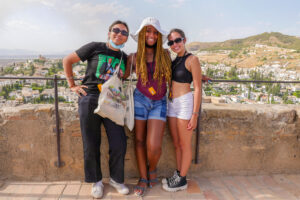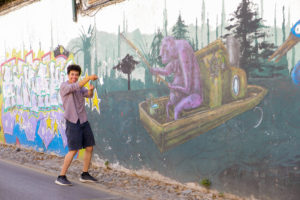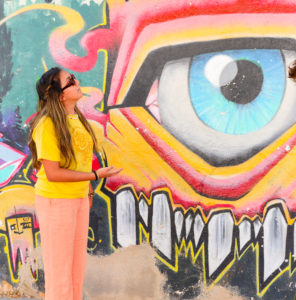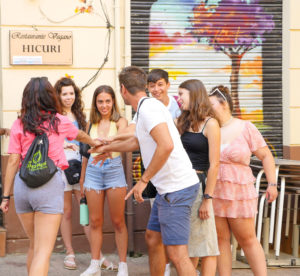This summer, The Experiment in International Living took 27 U.S. high school students on an unforgettable trip to southern Spain to learn the Spanish language and culture.
Living in the Andalusian towns of Granada and Guadix, these Experimenters dove deep into the rich heritage of Spain through formal language training and excursions to cultural and natural landmarks, museums, local markets and cafes, and more.
Students first arrived in Madrid with varying Spanish language proficiency, but each with a passion to learn and improve their skills.

Experimenters atop the historic Alhambra.
“I really wanted to practice my Spanish because my mom is Mexican and speaks Spanish,” said Brendan. “I thought it would be great just to learn more here, where I can be immersed. I said, ‘Let’s do it!’”
They received formal language instruction at the Centro de Lenguas y Educación Intercultural in Granada, a language school that provides courses with advanced methodologies and techniques. They then had the chance to apply what they learned as they explored local sites, all while participating in interactive Spanish language activities—like ordering ‘tapas.’ After learning the correct phrases and vocabulary, the students were encouraged to order the traditional Spanish appetizers for themselves at a café.
In another instance, the students were led through a walking tour of Granada by a local guide to learn about street art, stopping to flex their new Spanish skills as they explained their favorite pieces.

Experimenters Samantha (left) and Liam (right) explain—in Spanish—their favorite street art in Granada.

For many of these Experimenters, their interactions with city locals and the relationships they built with local Spanish students were particularly meaningful to their cultural immersion and growing language skills.
“What really stood out to me was that I was able to really build close relationships with Spanish people,” said Tristan. “I definitely think I’ve improved a lot on my Spanish speaking just from being pushed to talking to locals or stepping out of my comfort zone.”
Visiting historical sites like the Alhambra, a centuries-old Islamic palace and fortress, or learning the traditional Spanish dance of flamenco—all alongside native Spanish speakers—provided invaluable lessons about Spanish heritage and culture through language learning.

Experimenters and local Spanish students huddle before playing a game using their Spanish skills.
And this is just the beginning for many of the Experimenters.
“I definitely feel a lot more confident in my Spanish speaking skills,” said Alexa. “I want to be fluent, so I’m not going to stop practicing after this program. And now I feel like I know a lot about Spanish culture and I have a better understanding of the language and culture because I’ve witnessed it.”
“I’m going to be taking a Spanish literature class for my language this coming year,” said Maisy. “And I’m really hoping in college to be able to minor in Spanish and hopefully go abroad again.”
Would they recommend the immersive language program to others?
“I know my Spanish has improved tenfold,” Liam said. “Anybody who wants to learn a new language, a new culture, immerse themselves into everything that a country like this has to offer, I think they should do it.”


